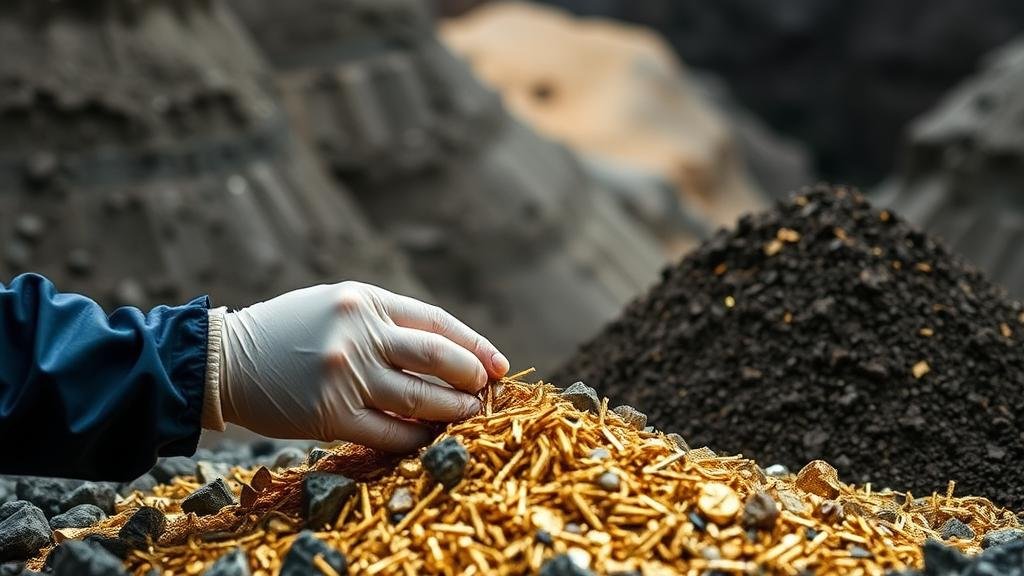How to Recover Precious Metals From Mining Byproducts Like Tailings
How to Recover Precious Metals From Mining Byproducts Like Tailings
The mining industry has long been a pivotal sector in the global economy, providing essential materials for various industries. But, the extraction processes often leave behind significant amounts of byproducts, particularly tailings, which can contain valuable precious metals. This article explores methods for recovering such metals from tailings, addressing both conventional practices and emerging technologies.
Understanding Tailings
Tailings are the remnants of materials left over after the extraction of valuable minerals from ore. Typically, tailings consist of finely ground rock, chemicals, and water. For example, in gold mining, the slurry of pulverized rock mixed with chemicals like cyanide is left behind once gold is extracted. According to the World Gold Council, almost 90% of the original ore used is discarded as tailings, highlighting a substantial loss of potential resources.
The Importance of Recovering Precious Metals
Recovering precious metals from tailings is crucial for several reasons:
- Resource Efficiency: Better utilization of resources can reduce the need for new mining, promoting sustainability.
- Environmental Protection: Processing tailings reduces contamination risks associated with abandoned tailing sites.
- Economic Viability: As precious metal prices fluctuate, previously uneconomical deposits can become profitable.
Methods for Recovering Precious Metals
1. Gravity Separation
Gravity separation utilizes differences in density to separate precious metals from lighter materials. This method is beneficial for recovering gold, as it can efficiently concentrate heavier particles. Techniques like jigs and shaking tables can enhance recovery rates. For example, at the Suwaidun Mine in China, the implementation of gravity separation methods resulted in a 30% increase in gold recovery from their tailings.
2. Flotation
Flotation is another commonly used technique that separates minerals based on their surface properties. Chemicals are added to the slurry to make specific metals hydrophobic, allowing them to float and be collected. This method has been effectively employed in the recovery of copper and precious metals such as silver and gold from tailings in U.S. and Chilean mining operations, yielding a noteworthy profitability enhancement.
3. Leaching
Leaching involves using chemicals to dissolve precious metals from solid waste. This process can be particularly effective for other metals when combined with cyanide in gold recovery. An example is the use of bioleaching in the North American mining sector, which employs microorganisms to extract metals from tailings. Recent studies indicate that bioleaching can improve recovery rates by up to 15% compared to conventional methods.
4. Advanced Techniques: Hydrometallurgy and Biotechnological Methods
Emerging technologies like hydrometallurgy, which applies aqueous chemistry to recover metals, and biotechnology methods that use microbes to extract precious metals, are gaining traction. For example, a research project in Australia demonstrated that integrating biotechnological processes with traditional techniques yields a recovery of up to 90% of remaining gold from tailing dams.
Challenges in Precious Metal Recovery
While recovering precious metals from tailings presents a viable route for resource recovery, several challenges must be addressed:
- Processing Costs: The economic feasibility of recovery methods can vary, influenced by market prices and the inherent value of the metals.
- Environmental Regulations: Compliance with stringent environmental regulations can complicate recovery operations.
- Technology Adoption: Integrating new technology into existing frameworks requires investment and expertise.
Real-World Applications
Several mining companies are successfully implementing these methods to recover metals from tailings:
- Gold Fields Ghana Limited: Uses gravity recovery circuits that have significantly increased gold recovery rates from tailings, demonstrating a commitment to sustainability and resource utilization.
- Newmont Corporation: Uses both hydrometallurgy and traditional extraction techniques to reclaim precious metals from tailings in Nevada, furthering their goal to minimize waste and reduce overall mining footprint.
Conclusion and Actionable Takeaways
Recovering precious metals from mining byproducts like tailings is not only feasible but also crucial for sustainable mining practices. By employing a combination of gravity separation, flotation, leaching, and advanced techniques, mining operations can significantly enhance resource recovery while minimizing environmental impact. Stakeholders in the industry are encouraged to:
- Assess and invest in recovery technologies that align with their operational capabilities.
- Conduct feasibility studies to evaluate the economic viability of recovery processes for tailings.
- Engage with regulatory bodies to ensure compliance with environmental standards while maximizing recovery efforts.
By addressing these aspects, the mining industry can transition toward more sustainable practices, contributing to a circular economy while also restoring economic value to byproducts previously considered waste.


